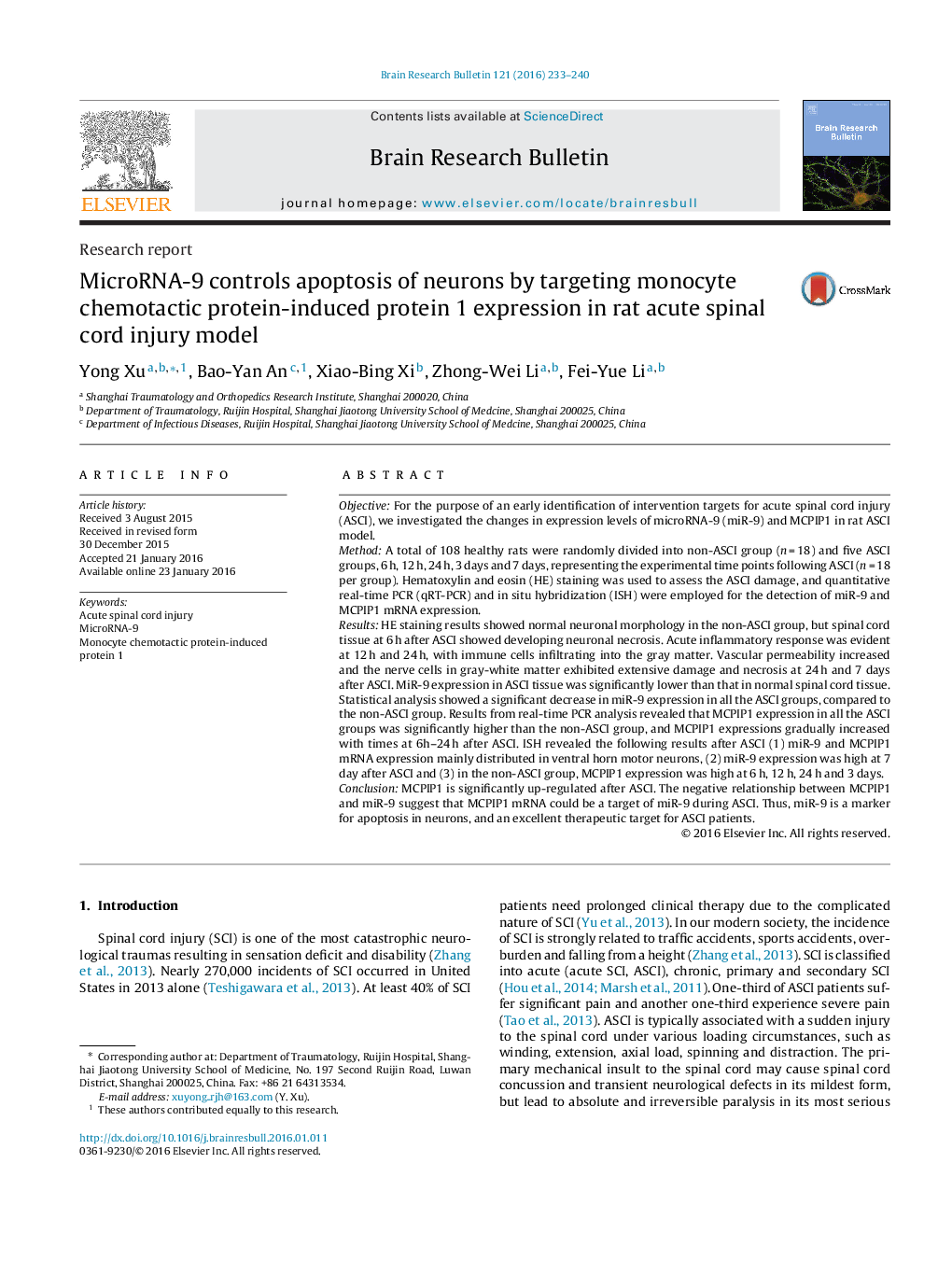| Article ID | Journal | Published Year | Pages | File Type |
|---|---|---|---|---|
| 4318658 | Brain Research Bulletin | 2016 | 8 Pages |
•MiR-9 expression in ASCI tissue was lower than that in normal spinal cord tissue.•The reliability of our results is secured by in vitro experiment and rat model.•MCPIP1 mRNA could be a negative target of miR-9 during ASCI.•MiR-9 as an excellent therapeutic target for ASCI patients is well-elaborated.•This topic contributes to early identification of intervention targets for ASCI.
ObjectiveFor the purpose of an early identification of intervention targets for acute spinal cord injury (ASCI), we investigated the changes in expression levels of microRNA-9 (miR-9) and MCPIP1 in rat ASCI model.MethodA total of 108 healthy rats were randomly divided into non-ASCI group (n = 18) and five ASCI groups, 6 h, 12 h, 24 h, 3 days and 7 days, representing the experimental time points following ASCI (n = 18 per group). Hematoxylin and eosin (HE) staining was used to assess the ASCI damage, and quantitative real-time PCR (qRT-PCR) and in situ hybridization (ISH) were employed for the detection of miR-9 and MCPIP1 mRNA expression.ResultsHE staining results showed normal neuronal morphology in the non-ASCI group, but spinal cord tissue at 6 h after ASCI showed developing neuronal necrosis. Acute inflammatory response was evident at 12 h and 24 h, with immune cells infiltrating into the gray matter. Vascular permeability increased and the nerve cells in gray-white matter exhibited extensive damage and necrosis at 24 h and 7 days after ASCI. MiR-9 expression in ASCI tissue was significantly lower than that in normal spinal cord tissue. Statistical analysis showed a significant decrease in miR-9 expression in all the ASCI groups, compared to the non-ASCI group. Results from real-time PCR analysis revealed that MCPIP1 expression in all the ASCI groups was significantly higher than the non-ASCI group, and MCPIP1 expressions gradually increased with times at 6h–24 h after ASCI. ISH revealed the following results after ASCI (1) miR-9 and MCPIP1 mRNA expression mainly distributed in ventral horn motor neurons, (2) miR-9 expression was high at 7 day after ASCI and (3) in the non-ASCI group, MCPIP1 expression was high at 6 h, 12 h, 24 h and 3 days.ConclusionMCPIP1 is significantly up-regulated after ASCI. The negative relationship between MCPIP1 and miR-9 suggest that MCPIP1 mRNA could be a target of miR-9 during ASCI. Thus, miR-9 is a marker for apoptosis in neurons, and an excellent therapeutic target for ASCI patients.
